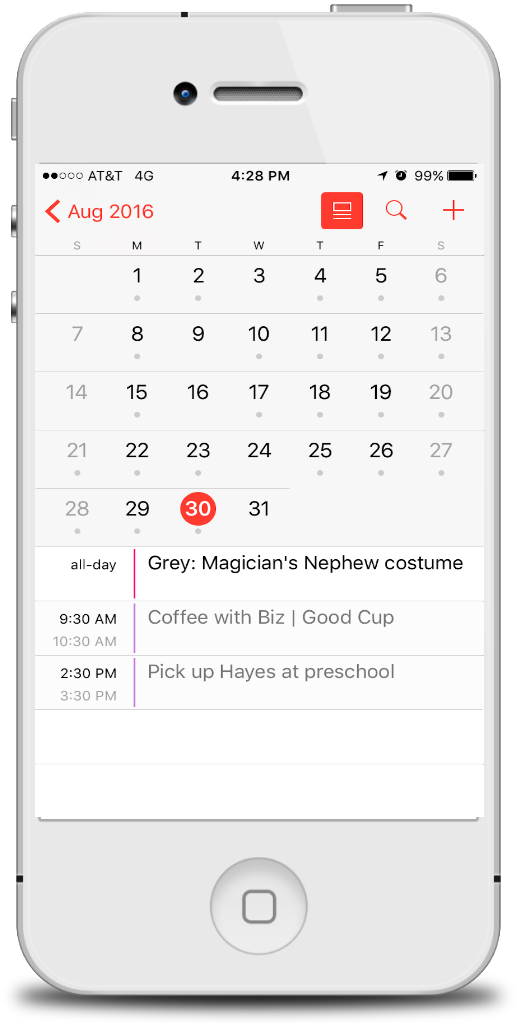I know a little something about dealing with separation anxiety when it comes to young kids and school. Back when my kids were in preschool, this was my routine: drop them off at the classroom, peel around the corner and press my back against the wall, then wait — sometimes two minutes, sometimes ten minutes — until they stopped crying. Sometimes I cried too.
Separation anxiety is exhausting and heartbreaking and, yes, even sometimes a bit frustrating. If you’re in the middle of it right now, know you’re not alone. We’ve been there — some of us still are there — and we know the disruption and emotional toil it takes on your family and day-to-day routines.
While ultimately I can assure you this is one of the many phases that kids will definitely grow out of, we do have some separation anxiety tips that can help you and your child get through it, after months of studying advice from all kinds of experts and other parents. These tips not going to solve your separation anxiety problems on the first go, but we do think they’ll help reassure your kids, so that ideally you can both get on with your day with a much happier outlook.
CMP is an rstyle affiliate
Related: 10 super simple tips for modeling healthier behavior for your kids.
1. Try to get to the root of the anxiety
Separation anxiety doesn’t only occur because kids are fearful they’ll never see their parents again. Some might be simply be bored or uninterested in a new environment, others need more activity (or less), and it may even be tied to social anxiety; some kids haven’t yet learned the skills to make friends so easily.
Since you know your child best, take an honest look at your child’s personality and try figure out what’s going on. Is your child overstimulated? Under-stimulated? Challenged in ways they (or you) aren’t comfortable with when you’re apart? An attempt to identify the issue can help you address the issue with the teacher or caregiver and help soothe transitions from home.
2. Be specific about your return

Very young kids don’t yet have a concept of future time; when they ask for a snack at 5:00 pm, right before dinner, a “no” feels like you’re saying they’ll never eat again. (Thus, the tantrums.) So being specific about time and dates can help.
As you prepare for your drop-off, talk through their time away from you in concrete terms they can understand. For example: “I’m going to drop you off with your teacher, then you’ll play cars, have a snack, take a nap, and wake up and read books — then I’ll be there to pick you up right at 2:30!” Even point to the time on your calendar, so they’ll know it isn’t something you think is important too, and that you’re not going to forget.
3. Read a reassuring book with them

There are a few great books I’ve found that help kids process feelings of separation anxiety, and reading these at night or after breakfast can help. The book Mama Always Comes Home by Karma Wilson and illustrated by Brooke Dyer shows all sorts of woodland mama and baby pairs reuniting after brief stints apart. It has helped my kids understand that, even though we have our own responsibilities, we do always come back.
Then there’s the classic, The Kissing Hand by Audrey Penn, which introduces a family secret of a kiss on your hand as a reminder of how much your parents love you, even when they’re away.
Related: 5 brilliant hacks for easier mornings with kids
4. Send them off with a reminder to be brave

I’m not advocating rewards for kids’ emotional meltdowns, but I have found that a small gift to remind my kids to be brave (ideally to stave off any meltdowns) can go a long way when they get lonely. It could be a friendship bracelet you both wear, a stuffed animal that has special importance, a lunch box or preschool backpack featuring a favorite brave superhero, or for older kids, a temporary tattoo that reminds them to be brave. (I love Tattly’s Okay, let’s do this tattoo shown here).
A simple reminder they learn to refer to can get them through the first two or three minutes of fear, until something fun distracts them and they’re ready to play again. As it generally does.
5. Just wait it out
I mean waiting it out both literally and figuratively. Simply rounding a corner out of sight and waiting a few minutes to hear that your child has calmed themselves (or their babysitter or teacher has helped with calming and distraction) can ease your mind so you aren’t worried while you’re gone. Plus, as any teacher will tell you, being out of eyeline is a huge help in itself.
(You can’t imagine how many teachers have told us that the second a parent leaves a crying child’s classroom, that child is absolutely 100% fine! Not every kid of course, but plenty of them.)
But also remind yourself, as with so many childhood phases, this too shall pass. This is a stage during which your child is learning to process new emotions, new skills, and independence, and it’s okay to admit that it’s hard on both of you. But it won’t last forever.
Your child may always be tentative, nervous, or sensitive — which aren’t bad things — but the phase of crying at school drop-offs will end one day. And then, like me, you may actually look back and miss those tender moments.
Top photo: London Scout via Unsplash





